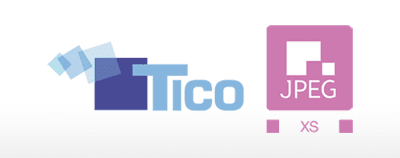
RTP Payload Format for ISO/IEC 21122 (JPEG XS RFC 9134)
RTP payload packetization modes for IP Media worflows & VSF TR08
Two RTP packetization modes are standardized in the JPEG XS payload offering more flexibility to implementers: A Codestream mode and A Slice-based mode.
A main difference is that the "Codestream mode" is sending the coded data in a raster scan order while the "Slice-based mode" enable to send the coded in a non-sequential transmission.
intoPIX and VSF TR08 recommend to apply (by default) the "Codestream packetization mode" for XS RTP payload. While it is offering the lowest latency of XS coding & decoding in all implementations: FPGA , CPU & GPU, the codestream packetisation mode offers also the following benefits:
- Better quality encoding & efficiency in JPEG-XS keeping on-the-fly constant bitrate coding (few lines of latency , below the frame)
- A direct remapping (no latency penalty) between RTP (ST 2110-22) and MPEG2-TS (ST 2022-2) without the need of parsing the codestream.
- A direct remapping (no latency penalty) between RTP (ST2110-22) and MXF without the need of parsing the codestream
In contrary : the Slice-based packetization mode might be recommended in case of a non-sequential transmission of the codestream. It might create a drawback in interoperability - causing other latency penalties in workflows, but might reduce the latency in the particular usage of some GPU. (This non-sequential benefits has not/never been proven and is difficult to make interoperable with hardware (FPGA) and CPU (ARM/x86_64) implementations












